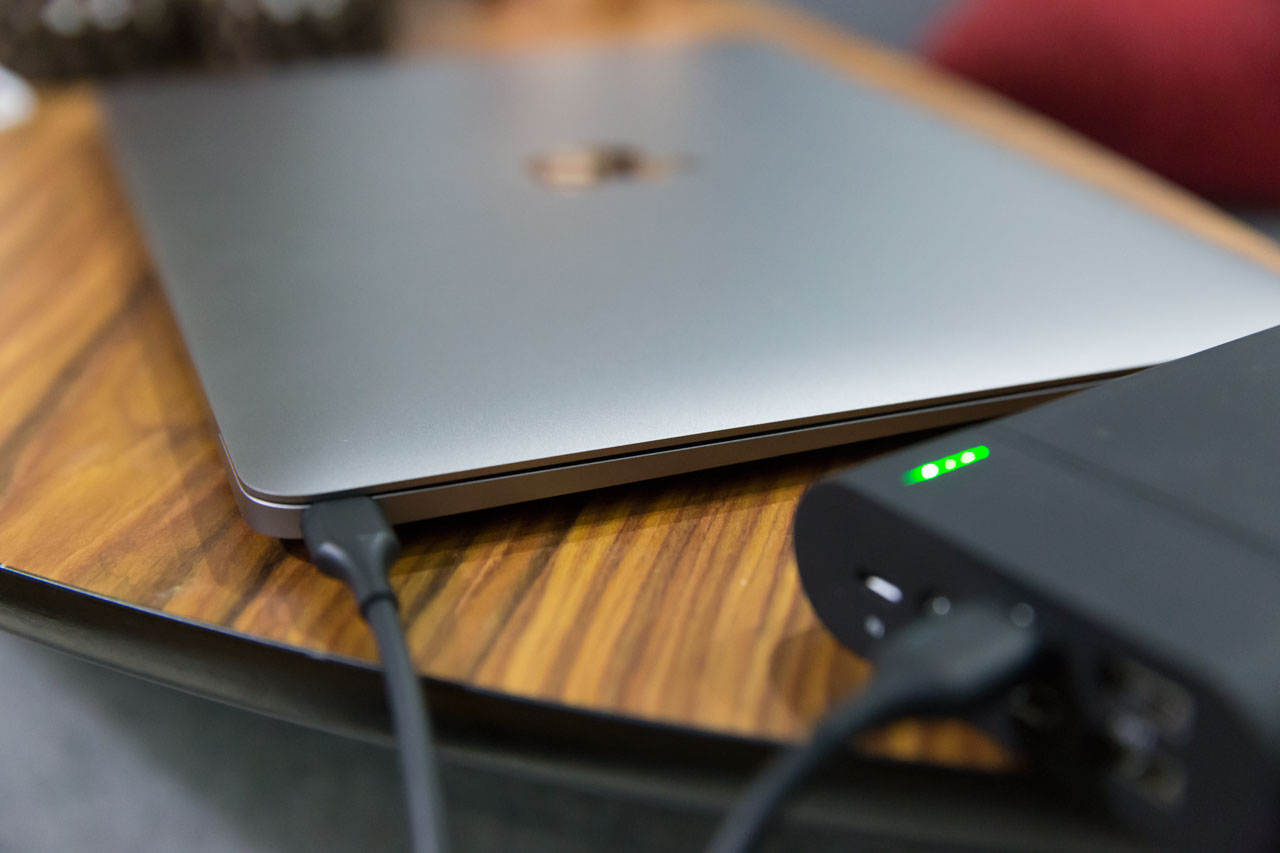
According to Apple, the new MacBook Pros can still charge via USB-C also, but the updated MagSafe 3 plug delivers more power than before. A less familiar addition is the new notch atop those Mini LED-packed 120Hz displays.īut for the clumsy people with cable-strewn desks, the return of MagSafe - what we’ve seen on iPhones just isn’t the same - might be the most important feature.
Macbook pro cable split pro#
Other than their M1 Pro and M1 Max chips, the new 14-inch and 16-inch computers ditch the much-hated Touch Bar in favor of physical keys and bring back the additional ports (HDMI, SDXC) power users love. Apple MacBook Pro ports with MagSafe 3 Image: Apple
Macbook pro cable split mac#
* Reader Ben Rosenthal identified that Mac as 12-inch PowerBook.Apple ditched MagSafe five years ago when it moved to USB-C charging on its new laptops, but MagSafe 3 brings the familiar quick-release connector back to this latest lineup of MacBook Pro laptops. It’s nice to see a company like Maclocks offer an innovative solution that can help with that trade-off. In this case, it’s size, weight and convenience versus security. A similar solution is offered for the MacBook Air.”Įngineering these MacBooks always involves trade-offs.
Macbook pro cable split skin#
Maclocks describes the MBPr solution “Maclocks security cover (patent pending) is a simple, yet clever solution which incorporates a security slot into the actual MacBook Pro cover (Only adds 0.35 lbs when using the lower skin and 0.7 lbs when using it as a shell).

I asked the Apple salesman if Apple offers an alternative solution, some accessory, for securing a MacBook, and he wasn’t aware of one.įortunately, TMO’s Jim Tanous knew about a company called that has a solution now for MacBook Airs - and soon for the MacBook Pro with Retina. These MacBooks are beautiful, expensive items, and sometimes it’s necessary to secure them, say, in the office, a news room or a computer show. However, if it does come off, an alarm goes off in the store. It’s a secure but not permanent bond, and it can be broken off with enough force. It’s an electronic device, a small cylinder, on a cable that’s stuck to the Mac with an adhesive. How then does Apple secure these computers in the store? For a long time, Apple has used a different system. On the other hand, here’s the edge of the MacBook Pro Retina at its thickest point. As you can see, there’s plenty of room for the lock to turn 90 degrees. I surmised that not only does there need to be room to turn the key 90 degrees, but there must also be enough metal surrounding the key for a solid, secure fit. In contrast, the regular MacBook Pro is thick enough, and does have a conventional security slot. In fact, as the salesperson showed me, even the MagSafe connector had to be redesigned to be thinner. ) The case isn’t thick enough for the tip of the lock when it turns. (That’s because of the T design of the tip. An Apple salesperson explained to me that, rather, it’s the depth of the case with respect to the size of the locking key when it’s inserted and turned 90 degrees. The issue, it turns out, is not the size of the security slot in the vertical dimension (case depth).

But the normal size of that slot is misleading. The MacBook Pro Retina, however is just a little thicker, and it looks like there is indeed room for a slot. The side of the MacBook Air is very, very thin, and one can understand why there’s no room for the slot. I should also note that neither does the MacBook Air have a security slot. I wondered why, and so I visited my local Apple retail store for an explanation. The new MacBook Pro with Retina Display (MBPr) doesn’t have a security slot for a locking cable.


 0 kommentar(er)
0 kommentar(er)
